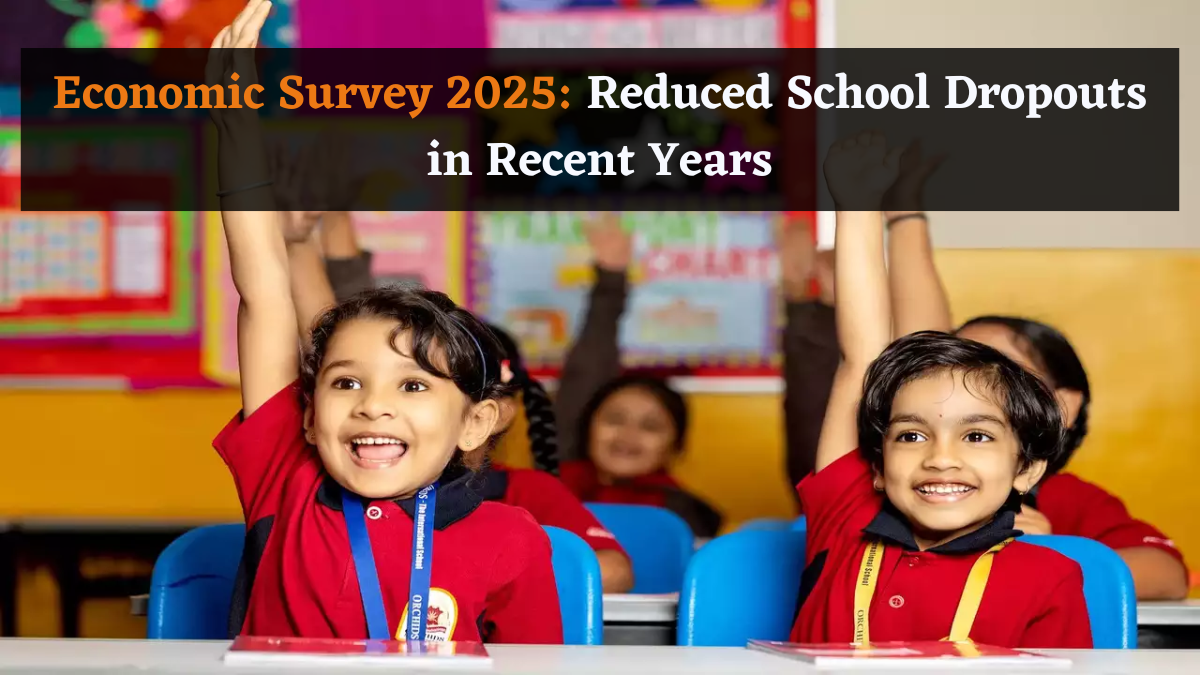The Economic Survey 2024–25 was presented to the Parliament today by Smt. Nirmala Sitharaman, Union Minister for Finance and Corporate Affairs.
According to the Survey, the National Education Policy 2020 (NEP) is based on the idea that human capital development and education are two of the fundamental foundations of development.
Economic Survey 2024–25: Key Insights on India's Education System
The Economic Survey 2024–25, presented in Parliament today, highlights the progress and challenges of India's education sector. It covers school education, higher education, digital adoption, and modern learning initiatives.
School Education in India
- India's education system serves 24.8 crore children across 14.72 lakh schools with 98 lakh teachers.
- Government schools make up 69%, enrolling 50% of students and employing 51% of teachers.
- Private schools account for 22.5%, enrolling 32.6% of students and employing 38% of teachers.
Number of IITs, IIMs, Medical Colleges
The number of higher education institutions (HEIs) in the nation grew from 51,534 in 2014–15 to 58,643 in 2022–23, representing a 13.8 percent growth.
According to the poll, the number of top institutes has also increased:
- IITs: 23 in 2023 (up from 16 in 2014)
- IIMs: 20 in 2023 (up from 13 in 2014)
- Medical colleges: 780 in 2024–25 (up from 387 in 2013–14)
- Total universities: 1,213 in 2024 (up from 723 in 2014)
Digital Adoption in Schools
The survey also revealed that the proportion of schools with computers rose from 38.5% in 2019–20 to 57.2% in 2023–2024. Additionally, the proportion of schools with internet access rose from 22.3% in 2019–20 to 53.9% in 2023–2024.
ALSO READ: Economic Survey 2025 presented by FM Nirmala Sitharaman; Check Key Details Here
Decrease in School Dropouts
Improved access to Information and Communication Technology (ICT) and better sanitation facilities have helped reduce dropout rates:
- Primary dropout rate: 1.9%
- Upper primary dropout rate: 5.2%
- Secondary dropout rate: 14.1%
Integration of Modern Technology in Education
Courses in modern technology are being introduced by educational institutions at all levels to meet the needs of the quickly changing labor market. Artificial Intelligence (AI) and technology have been more integrated into the educational system. The government has introduced TeacherApp, a state-of-the-art digital platform, in an attempt to use technology to improve educators' capacities and get them ready for the challenges of the twenty-first century.
The survey emphasized creative approaches, such as peer teaching, to meet financial literacy and numeracy goals.

Comments
All Comments (0)
Join the conversation